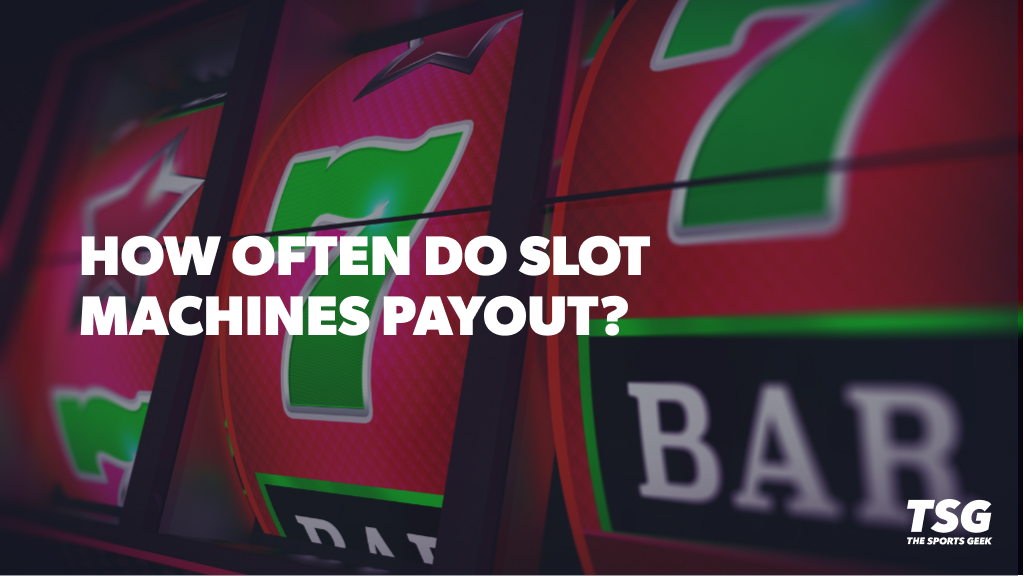
Ever wonder how often do slot machines pay out? In this guide, we’ll explore exactly that. We’ll start with hit frequency (also known as “hit rate”) to help you understand how often you’ll see any return on a spin.
We’ll also cover RTP (return to player), volatility (how big or small payouts tend to be), and how these elements shape your experience with jackpot chances and overall gameplay. By the end, you’ll have a clear grasp of what to expect and how to make informed slot choices.
What Is a Slot Machine Payout?
When gamblers want to know how often does a slot machine pay out, they’re commonly looking for one of two things:
1. Hit rate
2. Odds of winning the jackpot
The following info explains more on these concepts and how they both correlate to how much you can win at a slot machine.
1. Slot Machine Hit Rate Odds
Hit rate (a.k.a. hit frequency) refers to how often you’ll win at least one prize on a spin. If a slot features 22% win frequency, for example, then it’ll deliver one or more payouts on 22% of the spins.
Some online developers list hit rate in the info section. In this case, you can just visit the info area and find out the win frequency to find out how often a slot machine pays out.
Assuming this figure isn’t listed, though, then you’ll just have to guess based on the average slot. After all, the developer is the only party that has this info.
Of course, many mobile slots vary from these figures. Some games offer just a 15% hit rate or lower. Meanwhile, other slots have win frequency worth 30% or higher.
Generally speaking, though, you’ll be looking at somewhere between 20% and 25% hit frequency. You can rely on these percentages as a rough guideline when the proper information isn’t available.
Average Slot Hit Rate
The average online slot features somewhere between 20% and 25% hit frequency. These percentages translates to winning either 1 in 5 or 1 in 4 times.
2. Slot Machine Jackpot Odds
How often do slot machines hit the jackpot is another question we’ll dive into to evaluate your chanced of winning. The jackpot odds indicate your chances of hitting a game’s top prize. For example, you may face 1 in 500 million odds of winning a game’s biggest payout when playing for the progressive jackpot.
Jackpot odds can be all over the place. One game may deliver its top payout on 1 out of every 10 million spins, while another might only offer its jackpot on 1 out of every 10 billion spins.
If no figure is given, then you’ll have a tough time guessing slot machine jackpot odds. Again, these numbers are all over the place when looking across the industry.
Where To Find Jackpot Odds
As with hit rate, some developers list your odds of winning the jackpot in the info screen. This figure lets you know your exact chances of hitting the biggest payout.
If no figure is given, then you’ll have a tough time guessing slot machine jackpot odds. Again, these numbers are all over the place when looking across the industry.
Slot Machine Volatility vs. RTP
Volatility and RTP both influence how often slot machines pay out, but in different ways.
A slot machine’s RTP% measures the long-term percentage of wagers a game pays back to players, while volatility is a reflection of how big or small payouts tend to be. Let’s compare both.
1. The Volatility Factor
Many online slots players mistake hit rate as a great judge of volatility. However, high/low hit frequency doesn’t necessarily indicate high/low volatility.
The latter is a measure of how much money you can expect to win in the short run. It goes beyond just considering the percentage of times that you’ll win on each spin.
Here’s an example to explain this concept:
-
- You’re playing a slot with 33% hit frequency, which is pretty high.
- You’re betting $1 on each spin.
- Most of your payouts/hits are only in the $0.15 to $0.30 range.
- These low payouts indicate high volatility.
Simply put, high volatility slots see you win less short-term money on average. A high-volatility game with 96.5% RTP is less likely to live up to its payback in the immediate future. Instead, it’ll put you through more ups and downs.
Meanwhile, a low-volatility game with the same RTP will pay with more consistently. You won’t hit the 96.5% mark exactly, but you can expect something more along these lines with less volatility.
2. The RTP Factor
Return to player (RTP) is one of the most important factors when it comes to online slots. It determines how much a game pays out over the long run. For example, 96% RTP means that on average, the house will pay out 96 cents in prizes for every dollar placed as a wager.
You could consider RTP as another way to express how often slot machines pay. After all, payback directly indicates how much money you can expect to win from a game.
However, no online slot pays right around its RTP on a consistent basis, even the low-volatility ones. Payout percentages might take hundreds of thousands of spins to reach their mark.
That said, you should consider RTP as a long-term figure for expressing how often slots pay out. RTP isn’t a great method, though, for determining what you’ll win in a single session or series of sessions.
For instance, they might rate the volatility at anywhere between 1-5 or between 1-10. In such cases, you just need to visit the info screen and check out the rating.
Ready to Chase Your Next Slot Machine Payout?
Now you know all the factors that impact payout frequency and size of online slots. By combining these insights, you can approach slots with a more informed and strategic angle.
Want to test out everything you’ve learned? Try out a site like Slots.lv. This casino offers a welcome bonus of up to $3,000. It also gives you tons of chances to win big with hourly, daily, and other ongoing jackpots, plus prizes ranging from hundreds to thousands of dollars.

- Welcome bonus of 200% for crypto or 100% for credit cards.
- Dozens of exclusive slots.



You must be logged in to comment. Don't have an account? Sign up today.